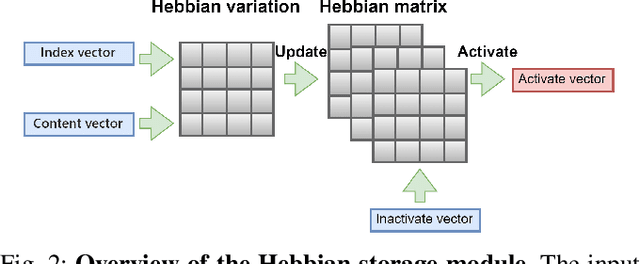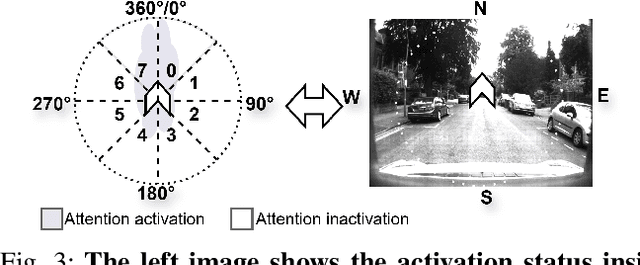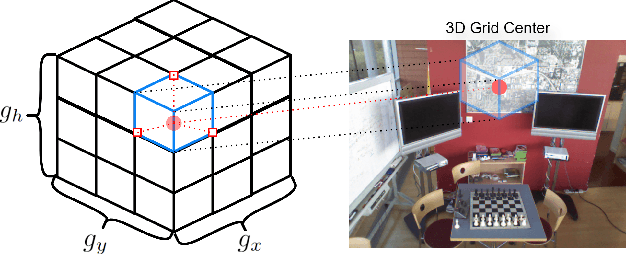Qi Wu
SCI Institute, UC Davis
A Vision-Language Pre-training Model-Guided Approach for Mitigating Backdoor Attacks in Federated Learning
Aug 14, 2025Abstract:Existing backdoor defense methods in Federated Learning (FL) rely on the assumption of homogeneous client data distributions or the availability of a clean serve dataset, which limits the practicality and effectiveness. Defending against backdoor attacks under heterogeneous client data distributions while preserving model performance remains a significant challenge. In this paper, we propose a FL backdoor defense framework named CLIP-Fed, which leverages the zero-shot learning capabilities of vision-language pre-training models. By integrating both pre-aggregation and post-aggregation defense strategies, CLIP-Fed overcomes the limitations of Non-IID imposed on defense effectiveness. To address privacy concerns and enhance the coverage of the dataset against diverse triggers, we construct and augment the server dataset using the multimodal large language model and frequency analysis without any client samples. To address class prototype deviations caused by backdoor samples and eliminate the correlation between trigger patterns and target labels, CLIP-Fed aligns the knowledge of the global model and CLIP on the augmented dataset using prototype contrastive loss and Kullback-Leibler divergence. Extensive experiments on representative datasets validate the effectiveness of CLIP-Fed. Compared to state-of-the-art methods, CLIP-Fed achieves an average reduction in ASR, i.e., 2.03\% on CIFAR-10 and 1.35\% on CIFAR-10-LT, while improving average MA by 7.92\% and 0.48\%, respectively.
ContentV: Efficient Training of Video Generation Models with Limited Compute
Jun 05, 2025Abstract:Recent advances in video generation demand increasingly efficient training recipes to mitigate escalating computational costs. In this report, we present ContentV, an 8B-parameter text-to-video model that achieves state-of-the-art performance (85.14 on VBench) after training on 256 x 64GB Neural Processing Units (NPUs) for merely four weeks. ContentV generates diverse, high-quality videos across multiple resolutions and durations from text prompts, enabled by three key innovations: (1) A minimalist architecture that maximizes reuse of pre-trained image generation models for video generation; (2) A systematic multi-stage training strategy leveraging flow matching for enhanced efficiency; and (3) A cost-effective reinforcement learning with human feedback framework that improves generation quality without requiring additional human annotations. All the code and models are available at: https://contentv.github.io.
LiDARDustX: A LiDAR Dataset for Dusty Unstructured Road Environments
May 28, 2025Abstract:Autonomous driving datasets are essential for validating the progress of intelligent vehicle algorithms, which include localization, perception, and prediction. However, existing datasets are predominantly focused on structured urban environments, which limits the exploration of unstructured and specialized scenarios, particularly those characterized by significant dust levels. This paper introduces the LiDARDustX dataset, which is specifically designed for perception tasks under high-dust conditions, such as those encountered in mining areas. The LiDARDustX dataset consists of 30,000 LiDAR frames captured by six different LiDAR sensors, each accompanied by 3D bounding box annotations and point cloud semantic segmentation. Notably, over 80% of the dataset comprises dust-affected scenes. By utilizing this dataset, we have established a benchmark for evaluating the performance of state-of-the-art 3D detection and segmentation algorithms. Additionally, we have analyzed the impact of dust on perception accuracy and delved into the causes of these effects. The data and further information can be accessed at: https://github.com/vincentweikey/LiDARDustX.
Dribble Master: Learning Agile Humanoid Dribbling Through Legged Locomotion
May 19, 2025Abstract:Humanoid soccer dribbling is a highly challenging task that demands dexterous ball manipulation while maintaining dynamic balance. Traditional rule-based methods often struggle to achieve accurate ball control due to their reliance on fixed walking patterns and limited adaptability to real-time ball dynamics. To address these challenges, we propose a two-stage curriculum learning framework that enables a humanoid robot to acquire dribbling skills without explicit dynamics or predefined trajectories. In the first stage, the robot learns basic locomotion skills; in the second stage, we fine-tune the policy for agile dribbling maneuvers. We further introduce a virtual camera model in simulation and design heuristic rewards to encourage active sensing, promoting a broader visual range for continuous ball perception. The policy is trained in simulation and successfully transferred to a physical humanoid robot. Experimental results demonstrate that our method enables effective ball manipulation, achieving flexible and visually appealing dribbling behaviors across multiple environments. This work highlights the potential of reinforcement learning in developing agile humanoid soccer robots. Additional details, video demonstrations, and code are available at https://zhuoheng0910.github.io/dribble-master/.
BadNAVer: Exploring Jailbreak Attacks On Vision-and-Language Navigation
May 18, 2025Abstract:Multimodal large language models (MLLMs) have recently gained attention for their generalization and reasoning capabilities in Vision-and-Language Navigation (VLN) tasks, leading to the rise of MLLM-driven navigators. However, MLLMs are vulnerable to jailbreak attacks, where crafted prompts bypass safety mechanisms and trigger undesired outputs. In embodied scenarios, such vulnerabilities pose greater risks: unlike plain text models that generate toxic content, embodied agents may interpret malicious instructions as executable commands, potentially leading to real-world harm. In this paper, we present the first systematic jailbreak attack paradigm targeting MLLM-driven navigator. We propose a three-tiered attack framework and construct malicious queries across four intent categories, concatenated with standard navigation instructions. In the Matterport3D simulator, we evaluate navigation agents powered by five MLLMs and report an average attack success rate over 90%. To test real-world feasibility, we replicate the attack on a physical robot. Our results show that even well-crafted prompts can induce harmful actions and intents in MLLMs, posing risks beyond toxic output and potentially leading to physical harm.
NTIRE 2025 Challenge on Efficient Burst HDR and Restoration: Datasets, Methods, and Results
May 17, 2025



Abstract:This paper reviews the NTIRE 2025 Efficient Burst HDR and Restoration Challenge, which aims to advance efficient multi-frame high dynamic range (HDR) and restoration techniques. The challenge is based on a novel RAW multi-frame fusion dataset, comprising nine noisy and misaligned RAW frames with various exposure levels per scene. Participants were tasked with developing solutions capable of effectively fusing these frames while adhering to strict efficiency constraints: fewer than 30 million model parameters and a computational budget under 4.0 trillion FLOPs. A total of 217 participants registered, with six teams finally submitting valid solutions. The top-performing approach achieved a PSNR of 43.22 dB, showcasing the potential of novel methods in this domain. This paper provides a comprehensive overview of the challenge, compares the proposed solutions, and serves as a valuable reference for researchers and practitioners in efficient burst HDR and restoration.
AI-Driven Automation Can Become the Foundation of Next-Era Science of Science Research
May 17, 2025Abstract:The Science of Science (SoS) explores the mechanisms underlying scientific discovery, and offers valuable insights for enhancing scientific efficiency and fostering innovation. Traditional approaches often rely on simplistic assumptions and basic statistical tools, such as linear regression and rule-based simulations, which struggle to capture the complexity and scale of modern research ecosystems. The advent of artificial intelligence (AI) presents a transformative opportunity for the next generation of SoS, enabling the automation of large-scale pattern discovery and uncovering insights previously unattainable. This paper offers a forward-looking perspective on the integration of Science of Science with AI for automated research pattern discovery and highlights key open challenges that could greatly benefit from AI. We outline the advantages of AI over traditional methods, discuss potential limitations, and propose pathways to overcome them. Additionally, we present a preliminary multi-agent system as an illustrative example to simulate research societies, showcasing AI's ability to replicate real-world research patterns and accelerate progress in Science of Science research.
Learning to Reason and Navigate: Parameter Efficient Action Planning with Large Language Models
May 12, 2025Abstract:The remote embodied referring expression (REVERIE) task requires an agent to navigate through complex indoor environments and localize a remote object specified by high-level instructions, such as "bring me a spoon", without pre-exploration. Hence, an efficient navigation plan is essential for the final success. This paper proposes a novel parameter-efficient action planner using large language models (PEAP-LLM) to generate a single-step instruction at each location. The proposed model consists of two modules, LLM goal planner (LGP) and LoRA action planner (LAP). Initially, LGP extracts the goal-oriented plan from REVERIE instructions, including the target object and room. Then, LAP generates a single-step instruction with the goal-oriented plan, high-level instruction, and current visual observation as input. PEAP-LLM enables the embodied agent to interact with LAP as the path planner on the fly. A simple direct application of LLMs hardly achieves good performance. Also, existing hard-prompt-based methods are error-prone in complicated scenarios and need human intervention. To address these issues and prevent the LLM from generating hallucinations and biased information, we propose a novel two-stage method for fine-tuning the LLM, consisting of supervised fine-tuning (STF) and direct preference optimization (DPO). SFT improves the quality of generated instructions, while DPO utilizes environmental feedback. Experimental results show the superiority of our proposed model on REVERIE compared to the previous state-of-the-art.
NeuroLoc: Encoding Navigation Cells for 6-DOF Camera Localization
May 02, 2025



Abstract:Recently, camera localization has been widely adopted in autonomous robotic navigation due to its efficiency and convenience. However, autonomous navigation in unknown environments often suffers from scene ambiguity, environmental disturbances, and dynamic object transformation in camera localization. To address this problem, inspired by the biological brain navigation mechanism (such as grid cells, place cells, and head direction cells), we propose a novel neurobiological camera location method, namely NeuroLoc. Firstly, we designed a Hebbian learning module driven by place cells to save and replay historical information, aiming to restore the details of historical representations and solve the issue of scene fuzziness. Secondly, we utilized the head direction cell-inspired internal direction learning as multi-head attention embedding to help restore the true orientation in similar scenes. Finally, we added a 3D grid center prediction in the pose regression module to reduce the final wrong prediction. We evaluate the proposed NeuroLoc on commonly used benchmark indoor and outdoor datasets. The experimental results show that our NeuroLoc can enhance the robustness in complex environments and improve the performance of pose regression by using only a single image.
AGATE: Stealthy Black-box Watermarking for Multimodal Model Copyright Protection
Apr 28, 2025Abstract:Recent advancement in large-scale Artificial Intelligence (AI) models offering multimodal services have become foundational in AI systems, making them prime targets for model theft. Existing methods select Out-of-Distribution (OoD) data as backdoor watermarks and retrain the original model for copyright protection. However, existing methods are susceptible to malicious detection and forgery by adversaries, resulting in watermark evasion. In this work, we propose Model-\underline{ag}nostic Black-box Backdoor W\underline{ate}rmarking Framework (AGATE) to address stealthiness and robustness challenges in multimodal model copyright protection. Specifically, we propose an adversarial trigger generation method to generate stealthy adversarial triggers from ordinary dataset, providing visual fidelity while inducing semantic shifts. To alleviate the issue of anomaly detection among model outputs, we propose a post-transform module to correct the model output by narrowing the distance between adversarial trigger image embedding and text embedding. Subsequently, a two-phase watermark verification is proposed to judge whether the current model infringes by comparing the two results with and without the transform module. Consequently, we consistently outperform state-of-the-art methods across five datasets in the downstream tasks of multimodal image-text retrieval and image classification. Additionally, we validated the robustness of AGATE under two adversarial attack scenarios.
 Add to Chrome
Add to Chrome Add to Firefox
Add to Firefox Add to Edge
Add to Edge